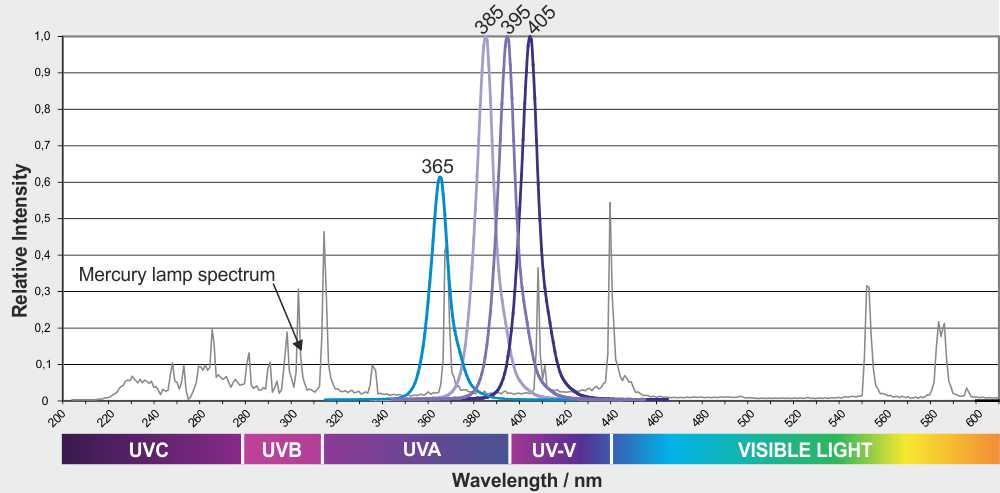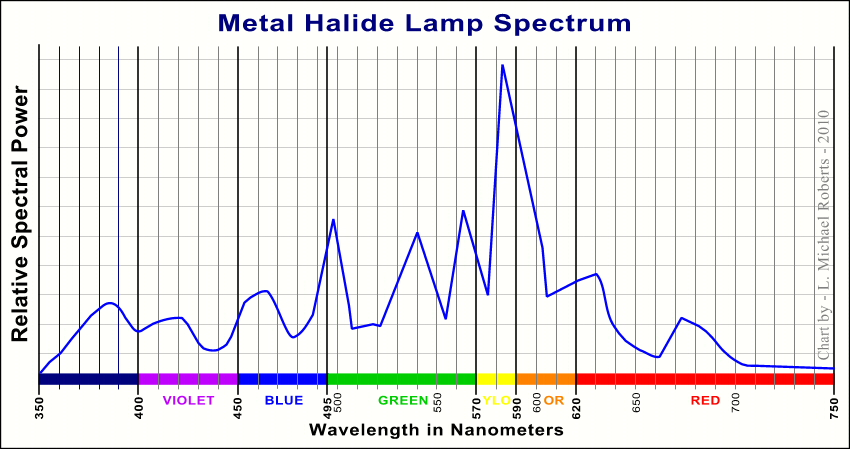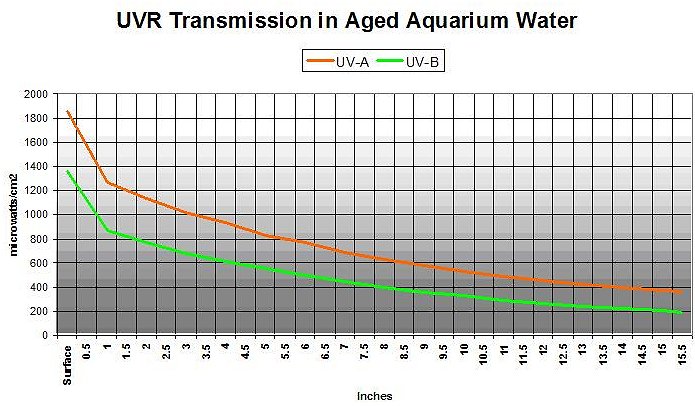It would be interesting to see what response there is to levels of UVB in our reef aquariums. Clearly, scientifically and anecdotally, lighting plays a dramatic role and clearly UV wavelengths, at least those readily available to us reef aquarists do affect, at least, coloration. If you go to this thread https://www.reef2reef.com/threads/reboot-with-leds-after-many-many-years-out.344915/ and head to post #20 you can see my anecdotal observations regarding light and its effect on the coloration of at least one acro sp in my tank.
Navigation
Install the app
How to install the app on iOS
Follow along with the video below to see how to install our site as a web app on your home screen.
Note: This feature may not be available in some browsers.
More options
You are using an out of date browser. It may not display this or other websites correctly.
You should upgrade or use an alternative browser.
You should upgrade or use an alternative browser.
Is there any Value to UV-A lighting
- Thread starter Ubergroover
- Start date
- Tagged users None
Effects of UV on corals...
http://citeseerx.ist.psu.edu/viewdoc/download?doi=10.1.1.867.7964&rep=rep1&type=pdf
http://citeseerx.ist.psu.edu/viewdoc/download?doi=10.1.1.867.7964&rep=rep1&type=pdf
@Dana Riddle Care to chime in? You have far more seasoned grey matter regarding this subject, likely far better access to available data, and studies already done.
I published an article on this subject in the mid-90's in Aquarium Frontiers. Looked at transmission of UV-A, UV-B in an aquarium. I'll have to find it.@Dana Riddle Care to chime in? You have far more seasoned grey matter regarding this subject, likely far better access to available data, and studies already done.
Looks like my article is MIA, but here's a graph Craig Bingman did examining time course removal of UV-absorbing compounds by activated carbon. Note times at top of each chart.

Oh interesting. You always have the good stuff Dana haha.
So another piece is if most of us have compounds that block UV anyway unless one uses carbon and changes it often?
So another piece is if most of us have compounds that block UV anyway unless one uses carbon and changes it often?
Gilvin, gelbstoff or whatever you want to call them are yellowing compounds usually resulting from decaying organic matter can absorb UV to some degree. The gist of that article was to examine UV transmission when adding or changing GAC. Test for gilvin by looking for yellowing of old water in a deep white container (such as a 5-gallon bucket) and compare it to a bucket filled with freshly but thoroughly mixed saltwater. Now, to expound on UV in aquaria. I wouldn't be overly concerned with excessive UV production in any commercial LED unit (at least any of those I've seen.) Metal halides are a different story. Use acrylic material to remove UV. All glass shields I've tested only marginally remove UV. Is UV good? UV-A is used by zoox in photosynthesis. UV-B absorbing compounds (Mycosporine-like amino acids or MAAs) can be produced by the shikimate pathway in all zooxanthellae species and clades, thus it shouldn't be much of an issue. UV-C is unnatural and is produced in at least small quantities by lamps containing mercury. On the flip side, when I was managing the coral farm, one of the retail guys showed me corals were colored up in a circular area within one of the 6' x 10' culture vessels and he didn't know why. As it turned out, someone had removed the acrylic shield on the MH directly above the coral. I was intrigued, and tested PAR with and without the guard and their wasn't much difference. I attributed the increased coloration to UV. I'll stop now - this is all old news.Oh interesting. You always have the good stuff Dana haha.
So another piece is if most of us have compounds that block UV anyway unless one uses carbon and changes it often?
Gilvin, gelbstoff or whatever you want to call them are yellowing compounds usually resulting from decaying organic matter can absorb UV to some degree. The gist of that article was to examine UV transmission when adding or changing GAC. Test for gilvin by looking for yellowing of old water in a deep white container (such as a 5-gallon bucket) and compare it to a bucket filled with freshly but thoroughly mixed saltwater. Now, to expound on UV in aquaria. I wouldn't be overly concerned with excessive UV production in any commercial LED unit (at least any of those I've seen.) Metal halides are a different story. Use acrylic material to remove UV. All glass shields I've tested only marginally remove UV. Is UV good? UV-A is used by zoox in photosynthesis. UV-B absorbing compounds (Mycosporine-like amino acids or MAAs) can be produced by the shikimate pathway in all zooxanthellae species and clades, thus it shouldn't be much of an issue. UV-C is unnatural and is produced in at least small quantities by lamps containing mercury. On the flip side, when I was managing the coral farm, one of the retail guys showed me corals were colored up in a circular area within one of the 6' x 10' culture vessels and he didn't know why. As it turned out, someone had removed the acrylic shield on the MH directly above the coral. I was intrigued, and tested PAR with and without the guard and their wasn't much difference. I attributed the increased coloration to UV. I'll stop now - this is all old news.
You always have answers! Is the amount of UVA produced by LEDs a meaningful amount to influence coral in any way?
- Joined
- Sep 18, 2017
- Messages
- 5,602
- Reaction score
- 3,448
Downside...
https://www.fda.gov/Radiation-EmittingProducts/RadiationSafety/AlertsandNotices/ucm116540.htm
https://www.photoelcuring.com/en/technologies/uv-led/emission-spectrum/


http://www.wikiwand.com/en/Metal-halide_lamp
Keep in mind y6ou normally can't measure intensity past normal "par" meter ranges.. ie 400nm..
https://www.fda.gov/Radiation-EmittingProducts/RadiationSafety/AlertsandNotices/ucm116540.htm
https://www.photoelcuring.com/en/technologies/uv-led/emission-spectrum/


http://www.wikiwand.com/en/Metal-halide_lamp
Keep in mind y6ou normally can't measure intensity past normal "par" meter ranges.. ie 400nm..
We're dealing with function (photosynthesis) and fashion (coral coloration.) UV-A, however small produced by LEDs (360nm and above), should be beneficial.You always have answers! Is the amount of UVA produced by LEDs a meaningful amount to influence coral in any way?
And this supports my anecdotal evidence of coloration differentiation observed in my aquarium between Hi and Low (relative UV) areas of the tank. Thank you, @Dana Riddle for helping out here and for all you do.Gilvin, gelbstoff or whatever you want to call them are yellowing compounds usually resulting from decaying organic matter can absorb UV to some degree. The gist of that article was to examine UV transmission when adding or changing GAC. Test for gilvin by looking for yellowing of old water in a deep white container (such as a 5-gallon bucket) and compare it to a bucket filled with freshly but thoroughly mixed saltwater. Now, to expound on UV in aquaria. I wouldn't be overly concerned with excessive UV production in any commercial LED unit (at least any of those I've seen.) Metal halides are a different story. Use acrylic material to remove UV. All glass shields I've tested only marginally remove UV. Is UV good? UV-A is used by zoox in photosynthesis. UV-B absorbing compounds (Mycosporine-like amino acids or MAAs) can be produced by the shikimate pathway in all zooxanthellae species and clades, thus it shouldn't be much of an issue. UV-C is unnatural and is produced in at least small quantities by lamps containing mercury. On the flip side, when I was managing the coral farm, one of the retail guys showed me corals were colored up in a circular area within one of the 6' x 10' culture vessels and he didn't know why. As it turned out, someone had removed the acrylic shield on the MH directly above the coral. I was intrigued, and tested PAR with and without the guard and their wasn't much difference. I attributed the increased coloration to UV. I'll stop now - this is all old news.
I found an article where I published my data.

You're welcome! Thanks for sharing your observations.And this supports my anecdotal evidence of coloration differentiation observed in my aquarium between Hi and Low (relative UV) areas of the tank. Thank you, @Dana Riddle for helping out here and for all you do.
Got one of those for New Aquarium Water for comparison?I found an article where I published my data.

You are welcome. It is far more dramatic than I would have thought possible. I cannot control for rogue confounds nor other contributing factors such as flow but I'm making the correlation, none the less.You're welcome! Thanks for sharing your observations.
Similar threads
- Replies
- 9
- Views
- 576
- Replies
- 2
- Views
- 86
- Replies
- 23
- Views
- 290
- Replies
- 3
- Views
- 111


















